A resistive
transducer is a device that senses a
change to cause a change in resistance.
Transducers do NOT generate electricity. Examples
include:
|
Device |
Action |
Where used |
|
Light Dependent
Resistor |
Resistance
falls with increasing light level |
Light operated
switches |
|
Thermistor |
Resistance
falls with increased temperature |
Electronic
thermometers |
|
Strain gauge |
Resistance
changes with force |
Sensor in an
electronic balance |
|
Moisture
detector |
Resistance
falls when wet |
Damp meter |
These are called
passive devices. (Active transducers
do generate electricity from other energy sources, or have a power supply.)
Light Dependent Resistors
The
light dependent
resistor consists of a length of material (cadmium sulphide) whose
resistance changes according to the light level. Therefore
the brighter the light, the lower the resistance.
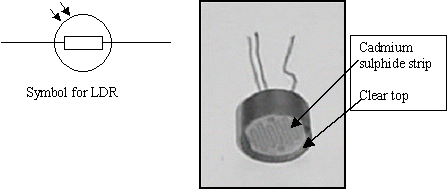
We can show the way the
resistance varies with light level as a graph:
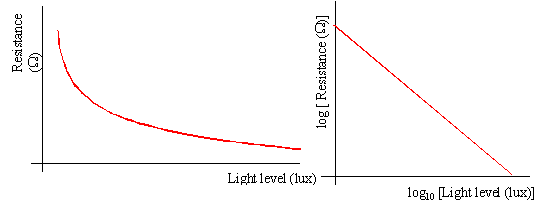
The first graph shows
us the variation using a linear scale. The graph on the right shows the plot
as a logarithmic plot, which comes up as a straight line. Logarithmic
plots are useful for compressing scales.

LDRs are used for:
-
Smoke detection
-
Automatic lighting
-
Counting
-
Alarm systems.
Resistive components
can get hot when excessive current is flowing through them, and this can impair
their function, or damage them. This can be prevented by connecting a current
limiting resistor in series, as shown in the picture below.
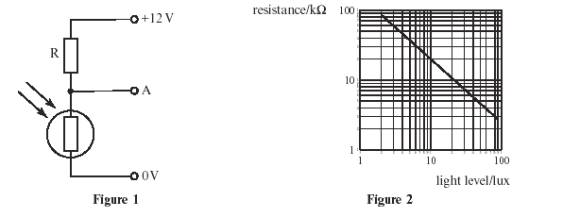
Thermistors
The most common type of
thermistor that we use has a resistance that
falls as the temperature rises. It is referred to as a negative temperature
coefficient device. A positive temperature coefficient device has a resistance
that increases with temperature.
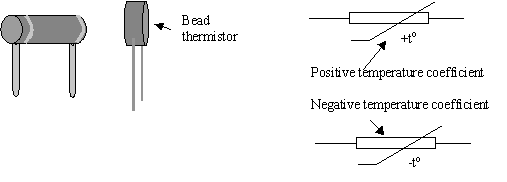
The graph of resistance
against temperature is like this.
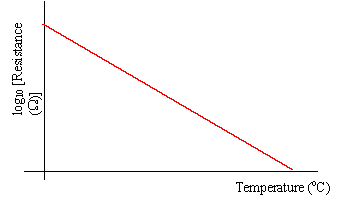
The resistance on this
graph is on a logarithmic scale, as there is a large range of values.
The LDR is most
commonly used in a potential divider circuit.
Potential Divider
-
Although it is
simple, the potential divider is a very
useful circuit. In its simplest form it is two resistors in series with an
input voltage Vs across the ends.
-
An output voltage
Vout is obtained from a junction between the two resistors.
The potential divider
circuit looks like this:

You need to learn this
equation. It is very useful.

This result can be
thought of as the output voltage being the same fraction of the input voltage as
R2 is the fraction of the total resistance. Look at this circuit for the next
example:
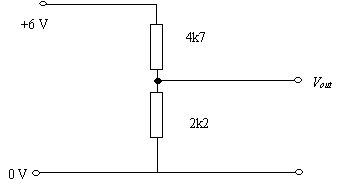
|